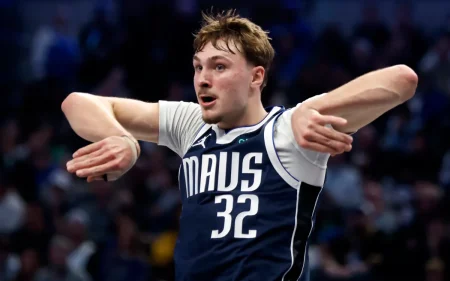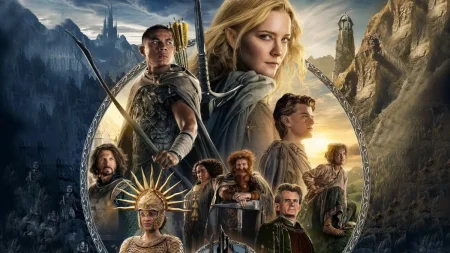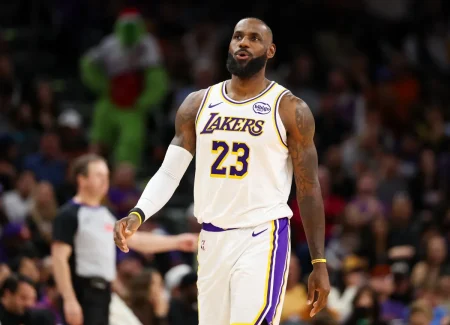The Iconic Return: Sting Makes Surprise Appearance at AEW WrestleDream 2025
In a moment that electrified wrestling fans worldwide, legendary wrestler Sting made a shocking return at “AEW WrestleDream 2025,” proving that some icons never truly fade away. During the intense “I Quit” match between Jon Moxley and Darby Allin, the arena erupted as the familiar figure of Sting emerged from the shadows. The dramatic scene unfolded when Moxley was attempting to drown Allin, only for Sting to intervene, wielding his signature baseball bat with the same intensity that made him a household name across multiple wrestling eras. With precision and purpose, the 66-year-old veteran dismantled members of the Death Riders faction, turning the tide of the match and sending fans into a frenzy of nostalgia and excitement. The intervention proved decisive, as Allin would go on to force Moxley to quit by applying the Scorpion Deathlock—a perfect tribute to his former tag team partner and mentor. This unexpected appearance closed out the pay-per-view event in spectacular fashion, leaving viewers stunned and social media buzzing with reactions.
Sting’s appearance at WrestleDream comes after what many believed was his definitive retirement from in-ring competition earlier in 2024. The wrestling legend had seemingly wrapped up his storied career at “AEW Revolution 2024,” where he and Allin successfully defended the AEW World Tag Team Championship against The Young Bucks in an emotional main event. That match was celebrated as the perfect send-off for a performer who had given decades to the wrestling business, first rising to prominence in WCW before later chapters with WWE and AEW. His retirement match showcased that even in his mid-60s, Sting could deliver performances that defied expectations and physical limitations. While he did make a brief appearance at “All In London” later that year—similarly saving Allin from an attack by Jack Perry and The Young Bucks who were attempting to set him on fire—few expected to see “The Icon” return to make such a physical impact as he did at WrestleDream, proving that his connection to the wrestling world, and particularly to Allin, remains unbroken despite his official retirement.
The bond between Sting and Darby Allin has become one of AEW’s most compelling relationships, blending mentorship with genuine friendship across generations. Their partnership began organically following Sting’s AEW debut at the “Winter is Coming” episode of “Dynamite” in late 2020, where he first appeared to protect talent from overwhelming odds—a role he has consistently played throughout his career. What started as occasional assistance evolved into a full partnership, with the face-painted warriors eventually capturing tag team gold together despite their 40-year age difference. Allin’s homage to Sting at WrestleDream by using the Scorpion Deathlock to secure victory symbolizes more than just a borrowed move—it represents the passing of a torch and the continuation of a legacy. Wrestling has always thrived on these intergenerational connections, and few have been executed with the authenticity and emotional resonance of the Sting-Allin relationship, which now adds another memorable chapter with this surprise reunion.
Sting’s journey to this moment has been nothing short of remarkable, spanning multiple wrestling companies and eras with a character that remained relevant for nearly four decades. His AEW arrival in 2020 came almost five years after his WWE Hall of Fame induction, which many assumed would be the final chapter of his wrestling story. Instead, his AEW run rejuvenated his career and legacy, allowing him to connect with a new generation of fans while delivering matches that defied expectations for a performer in his 60s. Before AEW, Sting had been synonymous with WCW during the Monday Night Wars, becoming the company’s most loyal standard-bearer and engaging in legendary feuds with the nWo. His eventual WWE run, though shorter than many hoped, culminated in his Hall of Fame recognition and cemented his place in wrestling history. What makes Sting unique is his ability to evolve while maintaining his core identity—from the colorful California surfer to the dark, Crow-inspired vigilante, each iteration of Sting has connected with audiences while staying true to the character’s fundamental principles of justice and integrity.
What has particularly impressed fans during Sting’s AEW tenure has been his willingness to participate in physically demanding matches despite his advanced age. Rather than settling for nostalgic appearances or simple cameos, Sting has taken part in cinematic matches, street fights, and even high-flying tag encounters that wrestlers half his age might approach with caution. His ability to adapt his style while still delivering compelling performances speaks to both his physical conditioning and his deep understanding of wrestling psychology. At 66, his movements may have slowed, but his instincts for dramatic timing and audience connection remain sharper than ever. His surprise appearances have become special moments in AEW programming, each one treated with the gravity and excitement befitting a performer of his stature. The uncertainty about what’s next for “The Stinger” only adds to his mystique—will this be another one-off appearance, the beginning of a new storyline involvement, or something else entirely? This question ensures that the wrestling world will continue talking about Sting long after the WrestleDream event has concluded.
As the wrestling landscape continues to evolve, figures like Sting serve as vital bridges between eras, connecting modern fans with wrestling’s rich history. His WrestleDream appearance reminds us that in an industry often criticized for failing to build new stars or relying too heavily on nostalgia, there can be a meaningful middle ground where legends enhance rather than overshadow current talent. The Sting-Allin relationship exemplifies this balance perfectly—Sting’s presence elevates Allin without diminishing his individual accomplishments, while Allin’s modern style and connection with younger audiences helps maintain Sting’s relevance. As fans process this latest surprise appearance, speculation will naturally turn to what the future holds. Whether this marks the beginning of a new chapter for Sting in AEW or simply stands as another memorable moment in his legendary career, his impact on professional wrestling remains undeniable. Decades after first emerging as a bleach-blonde surfer in the territorial days, Sting continues to demonstrate why he is truly worthy of the moniker “The Icon”—a wrestler whose influence, popularity, and ability to create magical moments have never waned, regardless of the company banner or the passing years.













